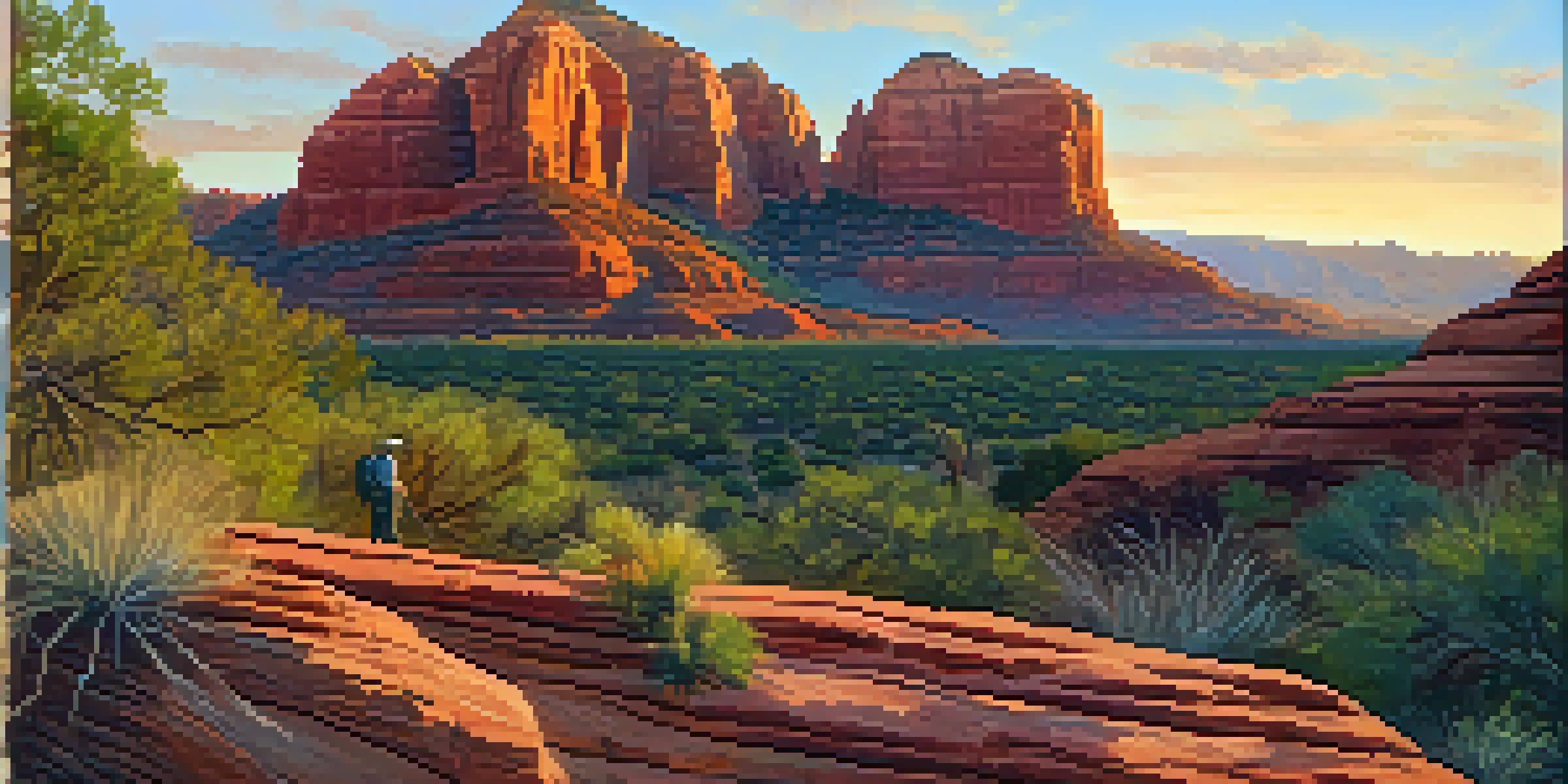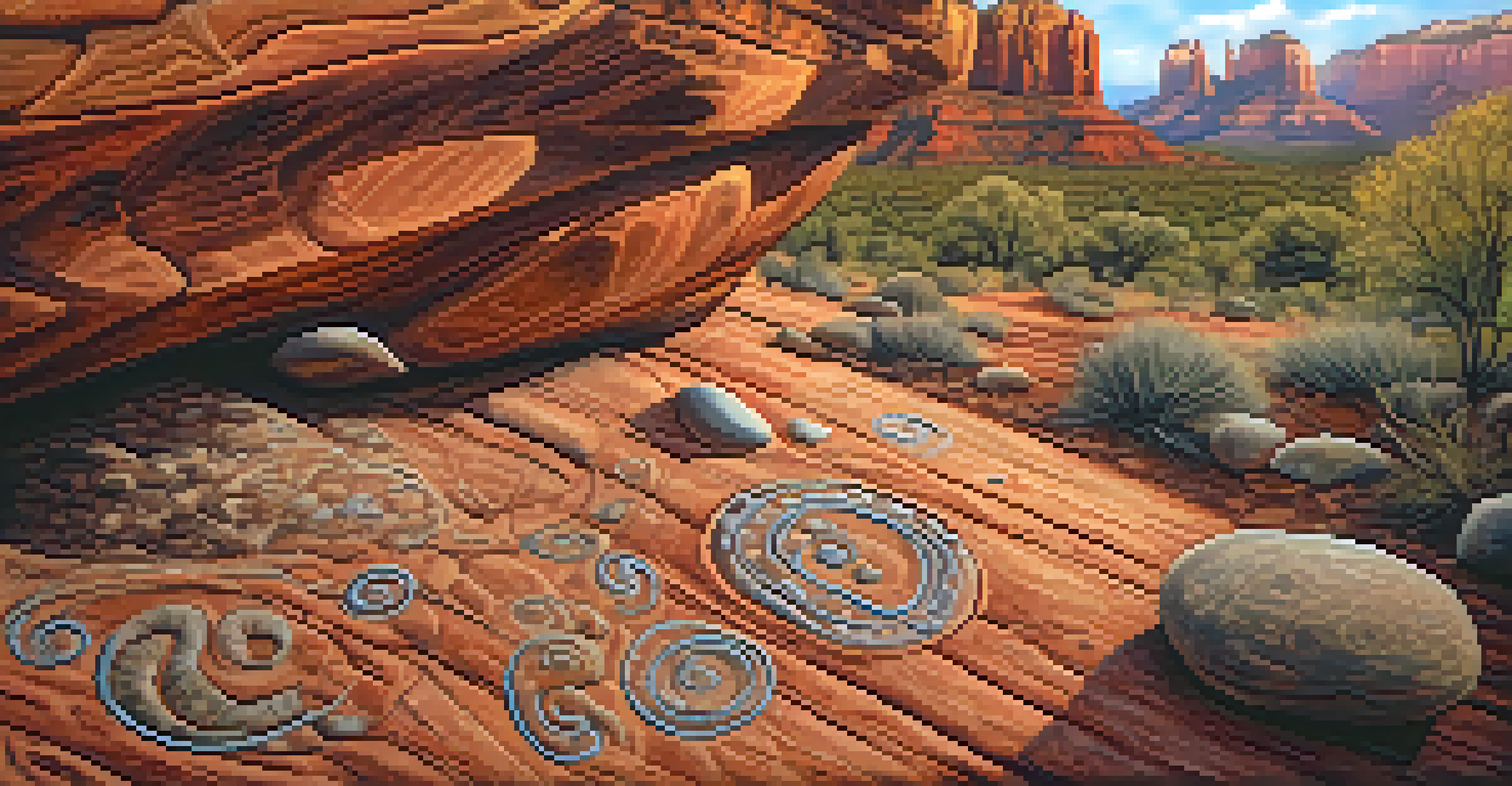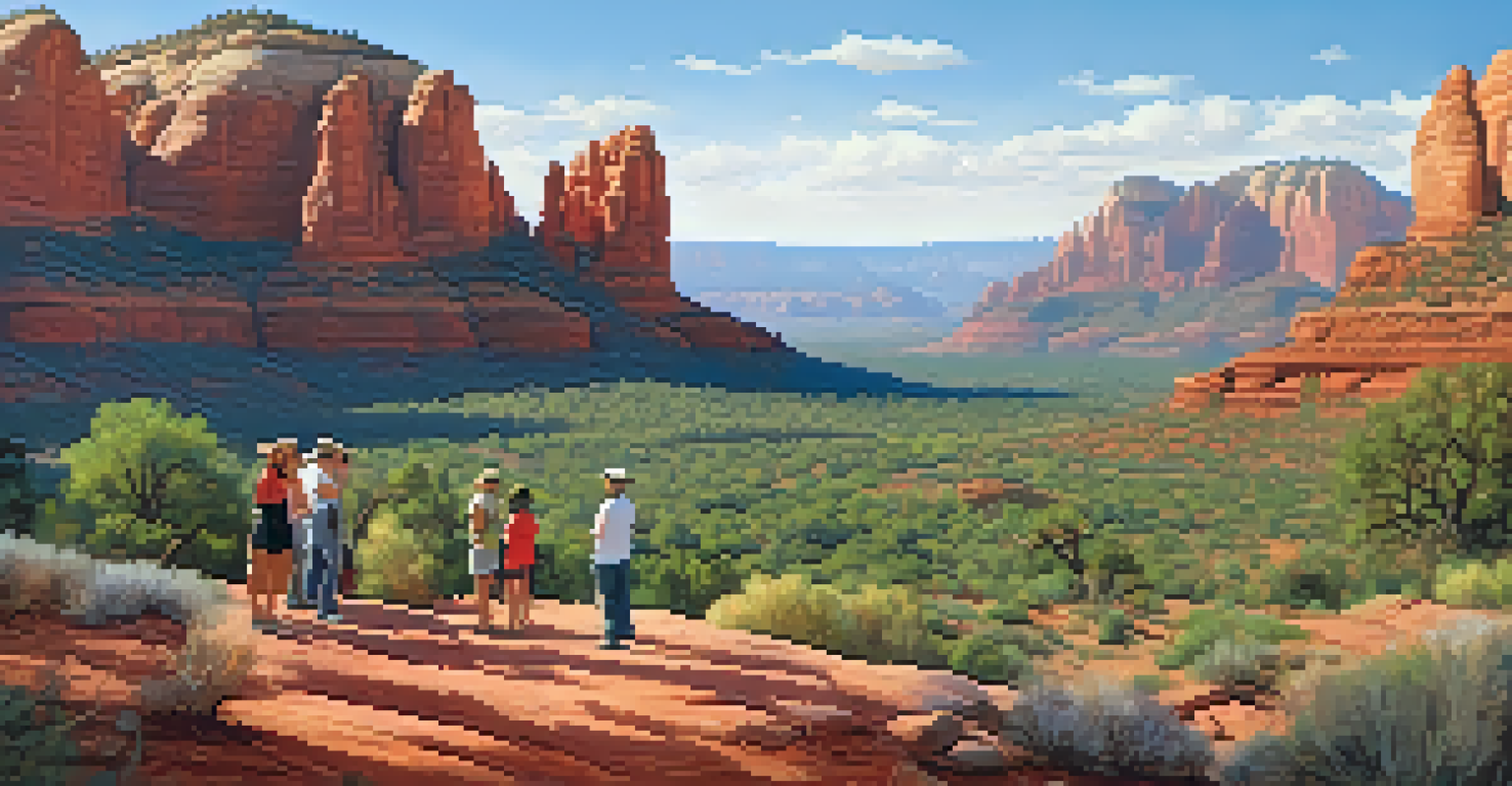Ancient Symbols: Decoding Sedona's Rock Art Messages

Introduction to Sedona's Unique Rock Art
Nestled among stunning red rock formations, Sedona is home to a treasure trove of ancient rock art. These symbols, etched into the surface by Indigenous peoples, tell stories that have echoed through time. As you hike the trails, it’s not just the breathtaking views that capture your attention, but the mysterious symbols that invite curiosity and exploration.
Art is the most beautiful of all lies; it is a reflection of the past and a bridge to the future.
The rock art of Sedona serves as a window into the past, revealing the spiritual and cultural significance of the area. Each symbol is believed to convey messages, whether they depict daily life, spiritual beliefs, or environmental observations. Understanding these messages allows us to connect with the land and its original inhabitants on a deeper level.
In this article, we will decode some of these ancient symbols, exploring their meanings and the stories they tell. By delving into the rich history behind Sedona's rock art, we can appreciate not just their aesthetic beauty, but also the profound messages they carry.
The Historical Context of Rock Art
To appreciate Sedona's rock art, it's essential to consider the historical context in which it was created. The Indigenous peoples, including the Sinagua and Hopi tribes, inhabited this region for thousands of years, each leaving their mark on the landscape. Their art reflects their beliefs, daily life, and their relationship with nature, making it a crucial element of their culture.

These artists used natural pigments and tools to create their work, often choosing locations that held spiritual significance. Rock art was not merely decorative; it served as a communication tool, conveying messages across generations. Each symbol and image is a part of a larger narrative that helps us understand the world as they saw it.
Ancient Symbols Tell Rich Stories
Sedona's rock art serves as a window into the spiritual and cultural significance of the Indigenous peoples who once inhabited the area.
By examining the historical context, we gain insight into the values and beliefs that shaped these communities. This perspective enriches our understanding of the rock art, allowing us to see it as a living history rather than mere markings on stone.
Common Symbols and Their Meanings
Sedona's rock art features a variety of symbols, each carrying distinct meanings. For example, spirals are often interpreted as representations of the life cycle, symbolizing growth and transformation. Other common motifs include animal tracks, which can indicate hunting routes or the presence of significant wildlife in the area.
The Earth without art is just 'eh'.
The sun and celestial symbols frequently appear in rock art, reflecting the importance of these elements in Indigenous cosmology. They serve as reminders of the connection between the earthly and the divine, illustrating how the natural world influenced their spirituality. Understanding these symbols allows us to glimpse the worldview of the artists.
Each symbol adds a layer of depth to the overall tapestry of Sedona's rock art. By recognizing these meanings, we can appreciate the artistry and intentionality behind each mark, fostering a deeper connection to the land and its history.
The Role of Nature in Rock Art
Nature played a pivotal role in the creation of rock art, influencing both the subject matter and the materials used. The stunning landscapes of Sedona, with its vibrant colors and unique formations, inspired artists to capture the beauty around them. Many symbols reflect the flora and fauna of the region, highlighting their importance in the daily lives of Indigenous peoples.
The use of natural pigments sourced from local minerals showcases a deep understanding of the environment. Artists blended these materials to create lasting images that harmonized with the landscape. This connection between art and nature underscores the respect the Indigenous peoples had for their surroundings.
Nature Influences Rock Art Creation
The stunning landscapes and natural materials of Sedona inspired artists to create symbols that reflect their environment and daily life.
By examining the interplay between nature and rock art, we gain insight into how these communities viewed their world. This perspective emphasizes the significance of environmental stewardship, a lesson that remains relevant today.
Preservation Efforts for Sedona's Rock Art
Preserving Sedona's rock art is vital for maintaining the cultural heritage of the region. As more visitors flock to this beautiful area, the risk of vandalism and natural erosion increases. Local organizations and Indigenous tribes are working together to protect these ancient symbols, ensuring they endure for future generations.
Education plays a key role in preservation efforts. By raising awareness about the importance of rock art, visitors can appreciate it responsibly. Initiatives such as guided tours and informational signage help foster a sense of respect and understanding among those who explore the area.
Through collaborative efforts, the hope is to safeguard these irreplaceable treasures while allowing people to experience the beauty of Sedona's rock art. This ongoing commitment to preservation highlights the importance of honoring the past as we move toward the future.
Exploring Rock Art: Tips for Visitors
If you're planning to explore Sedona's rock art, there are a few tips to enhance your experience. First, consider joining a guided tour led by knowledgeable local experts who can provide context and insights into the symbols you’ll encounter. These tours often include visits to lesser-known sites that may not be on the typical tourist path.
Always respect the rock art by staying on designated paths and avoiding touching the symbols. Not only can this help preserve the art, but it also shows respect for the cultures that created it. Carrying out any trash you bring and minimizing your impact on the environment further contributes to the preservation of these sacred sites.
Preservation is Key for Future Generations
Efforts to protect Sedona's rock art are crucial for maintaining its cultural heritage, ensuring that these ancient symbols endure for visitors to appreciate.
Lastly, take your time to truly absorb what you see. Spend a moment reflecting on the stories behind the symbols and the people who once walked this land. Engaging with the rock art in this way can deepen your connection to Sedona and its rich history.
Conclusion: The Legacy of Sedona's Rock Art
Sedona's rock art is more than just ancient symbols; it is a legacy that connects us to the past. Each symbol holds a story, a glimpse into the lives and beliefs of those who came before us. By understanding and appreciating these artworks, we honor the rich cultural heritage of the Indigenous peoples who once thrived in this landscape.
As we decode the messages within these symbols, we also learn valuable lessons about nature and community. The preservation of this art is crucial for ensuring that future generations can continue to learn from and be inspired by these ancient messages. It’s a reminder of the importance of protecting our history as we navigate the present.

In conclusion, exploring Sedona's rock art is an enriching experience that invites us to reflect on our own connection to the earth and its stories. As we walk among these ancient symbols, we become part of a larger narrative that transcends time, fostering a deeper appreciation for the beauty and complexity of human expression.